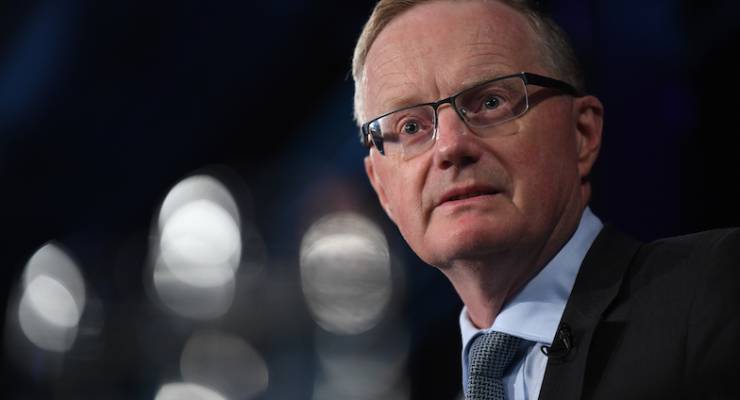
There’s a huge and growing divide in Australia over economic policy on wages and jobs, and it’s going to determine the country’s economic trajectory for the next few years. And there’s a very great deal of nonsense being peddled about it by interested parties.
Australia’s jobs market is now booming — both because of Australia’s success in handling the pandemic and massive fiscal stimulus, and because we’ve cut off the supply of temporary labour to employers by closing our borders. Hundreds of thousands of foreign students, temporary visa workers and working holidaymakers are no longer here to put downward pressure on wages in the occupations they tend to work in: retail; hospitality; care services; agriculture.
Yesterday’s May jobs data saw unemployment fall to pre-pandemic levels, at 5.1%, after 115,000 new jobs were created and participation rose to 66.2%. Participation has completely recovered from the recession collapse of 2020 and is now back in record territory, led by female participation.
But this great news for Australia leaves employer groups with a dilemma, because they’ve been insistent this week that they can’t afford the 2.5% minimum wage increase the Fair Work Commission (FWC) decided in its annual wage review, saying it will kill off jobs growth. Employers are simply refusing to pay their workers more despite complaining about skill shortages.
Reserve Bank governor Philip Lowe explained why in a speech in Toowoomba yesterday, noting that despite strong jobs growth, wages weren’t shifting. “It is noteworthy that even in those pockets where firms are finding it hardest to hire workers, wage increases are mostly modest,” he said. “There are some exceptions to this, but they are fairly isolated.”
Most businesses feel they are operating in a very competitive marketplace and that they have little ability to raise prices. As a result, there is understandably a laser-like focus on costs: if profits can’t be increased by expanding or by raising prices, then it has to be achieved by lowering costs. This has become the predominant mindset of many businesses. This mindset can be helpful in making businesses more efficient, but it also has the effect of making wages and prices less responsive to economic conditions.
This mindset became entrenched during the resources boom when the exchange rate appreciated very significantly. When one Australian dollar was worth more than one US dollar, many Australian businesses felt that their Australian dollar cost structure was simply too high. You might recall that through this period many businesses were saying that Australian costs, including labour costs, were leaving them uncompetitive. This experience has left a lasting imprint on many businesses and it has reinforced the narrative about the importance of cost control.
And it is wages growth that the RBA is focused on in its assessment of when it will start lifting interest rates. Jobs growth is just a means to that end. Lowe sees a “predominant mindset” in business as getting in the way of achieving that goal.
But the dollar hasn’t been above parity for many years; no treasurer has had to grapple with the challenge of managing an economy with a super-strong Australian dollar since Wayne Swan. Instead, the “laser-like focus” on costs has fed into much bigger profits. The March national accounts showed the wages share of national income at record lows for the past year (and dipping under a 50% share for the first time ever) and the profits share at all time highs — a situation that has been evolving since 2012.
Breaking this self-serving mindset is something the RBA continues to deal with. It won’t get much help from the government, business or its media cheerleaders. A truly idiotic editorial in The Australian Financial Review yesterday argued that Australians are still overpaid and any wage rises are unaffordable and “premature”. Of course, for employer groups and the AFR, wage rises are always unaffordable and premature — which is why employer groups were denouncing a modest 2.5% minimum wage rise in the middle of a jobs boom.
It’s not all business: despite the FWC foolishly giving some sectors, such as retail, a three-month delay in the wage rise, Woolworths yesterday said it will be passing on the wage rise to all of its 115,000 employees in its supermarkets and Big W chains straight away.
But for many other businesses, and major employer groups, the answer isn’t paying workers more to attract and retain them, but to demand that temporary workers be allowed back in immediately, COVID or not. The federal government would be happy to accommodate them except that it understands the electoral benefits of closed borders. But that didn’t stop them announcing a new visa this week for workers from low-income countries in our region to work in the exploitative horticulture industry.
It’s a small preview of an interesting political and policy problem that will arise next year: just when wages growth has picked up and Australians — hopefully — can see the prospect of decent wage rises for the first time in a decade, will the government be willing to allow in hundreds of thousands of temporary workers with the aim of restoring wage stagnation? Especially when they know the Reserve Bank’s view of when the time will be right to lift interest rates.









Crikey is committed to hosting lively discussions. Help us keep the conversation useful, interesting and welcoming. We aim to publish comments quickly in the interest of promoting robust conversation, but we’re a small team and we deploy filters to protect against legal risk. Occasionally your comment may be held up while we review, but we’re working as fast as we can to keep the conversation rolling.
The Crikey comment section is members-only content. Please subscribe to leave a comment.
The Crikey comment section is members-only content. Please login to leave a comment.